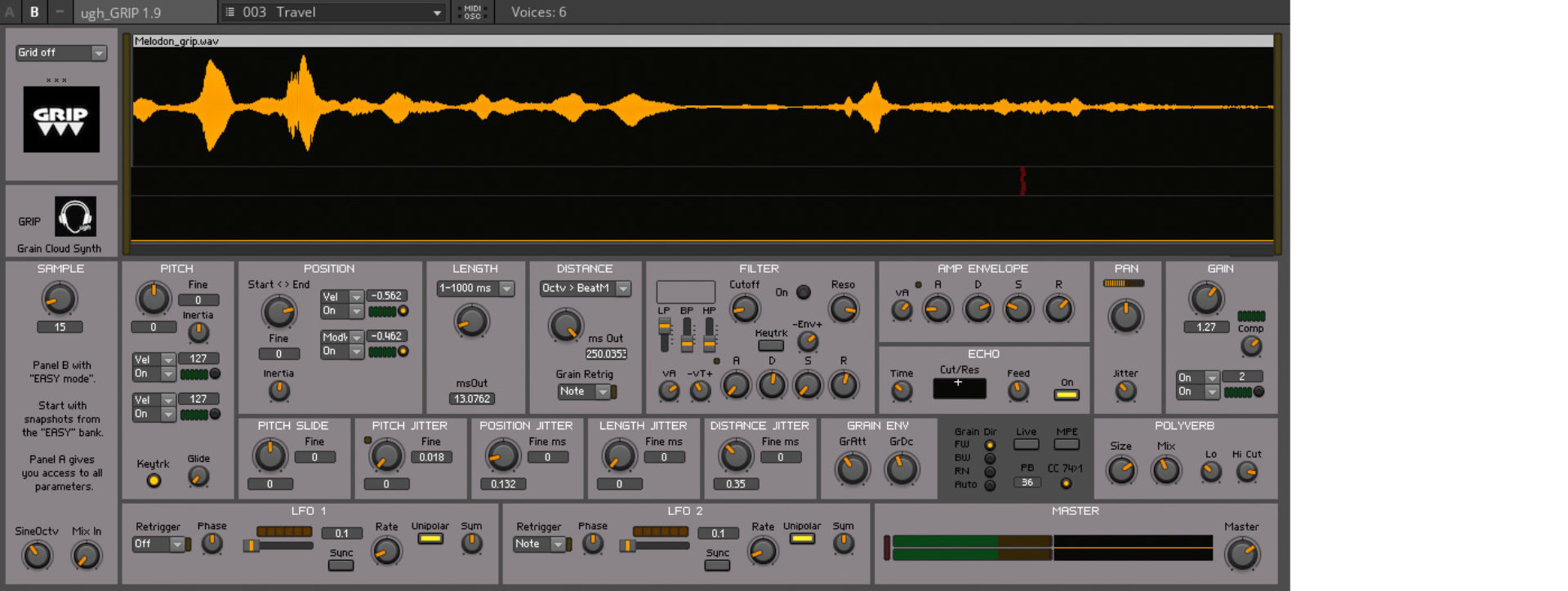

- FREE NATIVE INSTRUMENTS REAKTOR SOUNDS DRIVER
- FREE NATIVE INSTRUMENTS REAKTOR SOUNDS SOFTWARE
- FREE NATIVE INSTRUMENTS REAKTOR SOUNDS PC
- FREE NATIVE INSTRUMENTS REAKTOR SOUNDS FREE
You can also crossfade between the oscillator and the feedback signal. There you can add Drive (distortion), Fold (folds back the shape) and Asym (creates even harmonics) to the waveform shape. The controls for the Shaper section are on the right.
FREE NATIVE INSTRUMENTS REAKTOR SOUNDS DRIVER
From there you can change the sample rate, change the driver type, routing, and more. You can get to many other settings (including the MIDI and Audio settings) by going to Reaktor’s menu at the upper-left. The learn function works well, and I just happen to have enough sliders on my MIDI keyboard controller for the all the oscillator and filter section’s sliders. A right-click on a control in Kontour gives you options to reset its default setting and to use MIDI learn. It sounds complex, but actually the controls are lined up in a way (see screenshot above) to make it easy to understand for each oscillator/shaper. The settings for the second oscillator and Shaper (B) are the same as oscillator and shaper A, except of course PM B is actually PM A, because it gets its input signal for phase modulation from the other oscillator/shaper. Below those PM controls are two shaper settings which adjust the amount of the shaper for the PM Self and PM B. Using the PM Self can make the sine waveform more like a sawtooth as you dial it in. The controls right below the tuning section are for setting the amount of self-modulation (PM Self), the PM from the other oscillator and shaper (PM B), and from the feedback signal (PM F). Using 0.0 would make every pitch the same across all keys, which can be useful for certain types of presets. The key tracking is for the oscillator’s pitch, and leaving it at the standard 1.0 will result in an equal temperament scale. If for example you change it from 60 to 72 (which is twelve semitones higher) then it will be one octave higher than it was before. The tuning is adjusted using semitone increments with 60 semitones corresponding to C3 (MIDI note 60). As I mentioned earlier, sine waves are used to generate their sound, but there also are PM (phase modulation) inputs for self-modulation, the feedback signal, and the output of the other oscillator. We’ll start by taking a look at the two oscillators. Now let’s get back to the details of View B. If that is View B, then what is “View A”? It is just a reduced a version of the synth with fewer controls: the macros and a volume slider are along the top, Motion Recorder in the middle (more on its functionality later), and sliders for the effect levels along the bottom. There is a good selection to choose from across several categories, some of which include Keys, Plucked, Metallic, Wind, Percussion and Bass. If you click in the preset name field it will bring up a menu where you can switch to another category and/or select a different preset. By using the up/down arrows you can step through each preset within a category. To start listening to some presets, you can use the browser at the top of the display. The mixer, wave shaper and feedback mixer are on the right, macros along the top, and the effects are at the bottom. Basically what you see are the two oscillators and filters in the middle, and the envelopes on the left. Once it is loaded you’ll see the main display, which is called “View B”. For this review, I evaluated Kontour by using the Reaktor Player.Īfter I had the Reaktor Player loaded in my DAW, I proceeded to load Kontour from the browser along the left side. Kontour is available in VST, AU, AAX and standalone formats. If you have a Mac, you’ll need OS X 10.11 (or higher), 4 GB of RAM, and an Intel i5 (or equivalent CPU).

FREE NATIVE INSTRUMENTS REAKTOR SOUNDS PC
For the PC you’ll need Windows 7 (or higher), at least 2 GB of RAM, and an Intel i5 (or equivalent CPU).

FREE NATIVE INSTRUMENTS REAKTOR SOUNDS FREE
Kontour runs inside of Native Instruments Reaktor or the free Reaktor Player. This is just scratching the surface however, and I will get into more of its details shortly. In addition, there are 378 presets to get you started. You can use phase modulation, two filters (comb and state variable types), motion recorders, ring modulation, and several effects to alter the sound even further. Kontour uses two sine wave oscillators and waveshaping to create its basic sound. One of the synth plugins that has been developed in recent years is Kontour. NI has also produced several hardware products, including MIDI keyboards/controllers and digital DJ equipment.

Here are some of their more well-known products: FM8, Kontakt, MASSIVE, Guitar Rig, Battery, and Reaktor.
FREE NATIVE INSTRUMENTS REAKTOR SOUNDS SOFTWARE
Native Instruments (NI, informally) should need no introduction, but just in case you need a reminder of what they’ve developed, I will offer up a few music software titles for you. From Native Instruments: Kontour, a powerful yet easy to use synth plugin which excels at organic and experimental sounds.


 0 kommentar(er)
0 kommentar(er)
